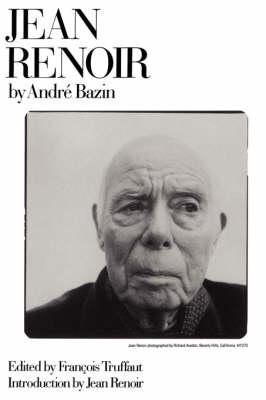Anne Burdick, Johanna Drucker, Peter Lunenfeld, Todd Presner, Jeffrey Schnapp: Digital_Humanities (2012)
Filed under book | Tags: · data mining, data visualisation, digital humanities, education, linguistics, simulation

“Digital_Humanities is a compact, game-changing report on the state of contemporary knowledge production. Answering the question, “What is digital humanities?,” it provides an in-depth examination of an emerging field. This collaboratively authored and visually compelling volume explores methodologies and techniques unfamiliar to traditional modes of humanistic inquiry–including geospatial analysis, data mining, corpus linguistics, visualization, and simulation–to show their relevance for contemporary culture.
Included are chapters on the basics, on emerging methods and genres, and on the social life of the digital humanities, along with “case studies,” “provocations,” and “advisories.” These persuasively crafted interventions offer a descriptive toolkit for anyone involved in the design, production, oversight, and review of digital projects. The authors argue that the digital humanities offers a revitalization of the liberal arts tradition in the electronically inflected, design-driven, multimedia language of the twenty-first century.
Written by five leading practitioner-theorists whose varied backgrounds embody the intellectual and creative diversity of the field, Digital_Humanities is a vision statement for the future, an invitation to engage, and a critical tool for understanding the shape of new scholarship.”
Publisher MIT Press, 2012
Open Access
ISBN 0262018470, 9780262018470
x+141 pages
André Bazin: Jean Renoir (1971–) [EN, PT]
Filed under book | Tags: · cinema, film, film theory

This classic in the literature of cinema represents the convergence of the three leading figures of French film: Jean Renoir, universally considered the greatest French director; André Bazin, the outstanding French film critic and theorist; and François Truffaut, the pioneer of la nouvelle vague. Bazin left this examination of Renoir’s films unfinished when he died in 1958; Truffaut collected and edited the essays, and added a comprehensive filmography in which Bazin, Truffaut, Jacques Rivette, Jean-Luc Godard, Eric Rohmer, and other Cahiers du Cinéma regulars comment on the films. Here are brilliant insights into the whole of Renoir’s oeuvre, from the avant-garde fantasy of La Petite Marchande d’Allumettes, through the epic humanism of Grand Illusion and The Rules of the Game, to the quiet grace of The River and the profound theatricality of The Golden Coach. Bazin shows why Renoir is the critical figure in the development of cinema since the silent era, and how he went beyond montage to give the art new expressive potential. Renoir’s work constitutes one of the most fully and beautifully elaborated visions in contemporary art, and nowhere is this humanistic vision better illuminated than in this book.
Originally published in French as Jean Renoir, avant-propos de Jean Renoir, éditions Champ libre, 1971
Translated by W. W. Halsey II and William H. Simon
Edited and with an Introduction by François Truffaut
Introduction by Jean Renoir
Publisher W.H.Allen, London & New York, a division of Howard & Wyndham Ltd., 1974
ISBN 0671214640
320 pages
Jean Renoir (English, trans. W. W. Halsey II and William H. Simon, 1974)
Jean Renoir: Filmografia (Portuguese, trans. Isabel Lobinho, 1975)
Benjamin Robert Levy: The Electronic Works of György Ligeti and Their Influence on his Later Style (2006)
Filed under thesis | Tags: · electronic music, music, music theory
This dissertation investigates the connections between the composer’s pieces for electronic tape written in the late 1950s and the instrumental music he composed thereafter. There are numerous reasons to suspect such a chain of influence, including suggestive comments Ligeti has made in interviews. Moreover, these works, Glissandi (1957), Artikulation (1958), and the uncompleted Pièce électronique no. 3 (1957-58), were written at a critical point in the composer’s career, falling between two major stylistic periods. Before he fled Hungary in December 1956 his compositions were influenced by Bartók, but his orchestral pieces Apparitions (1958-59) and Atmosphères (1961) were much celebrated for their strikingly original textures and timbres. While these orchestral pieces secured Ligeti’s reputation as an important avant-garde figure, the first works he composed in the West were the electronic pieces, which have suffered relative neglect. There are difficulties inherent in analyzing electronic music, and thus the first chapter of this dissertation focuses on theoretical literature in this growing field, including discussion of musical timbre, different means of notation, and in particular, the work of theorist Robert Cogan. Chapters 2 and 3 are analytical studies of Ligeti’s finished tape piece, using spectrographs and information from Ligeti’s sketches to focus on the use of sonic material in the construction of form. Additionally each study is put in the context of Ligeti’s contemporaries, composers such as Karlheinz Stockhausen and Gottfried Michael Koenig, as well as figures such as the philosopher T.W. Adorno. The fourth and final chapter focuses on the historical chain of influence and examines some of Ligeti’s instrumental music, particularly Apparitions, in light of the their electronic precedents. These examples illuminate connections between the electronic and instrumental, ranging from the slightest nuances in individual gestures-many of which are translated directly from one medium to the other-to methods of constructing entire forms, which continue to appear throughout Ligeti’s oeuvre; thus, the final aim of this dissertation is to provide groundwork for further studies which will deepen the understanding of other works by this innovative composer.
Dissertation
Faculty of the Graduate School of the University of Maryland, College Park
May 2006
272 pages

